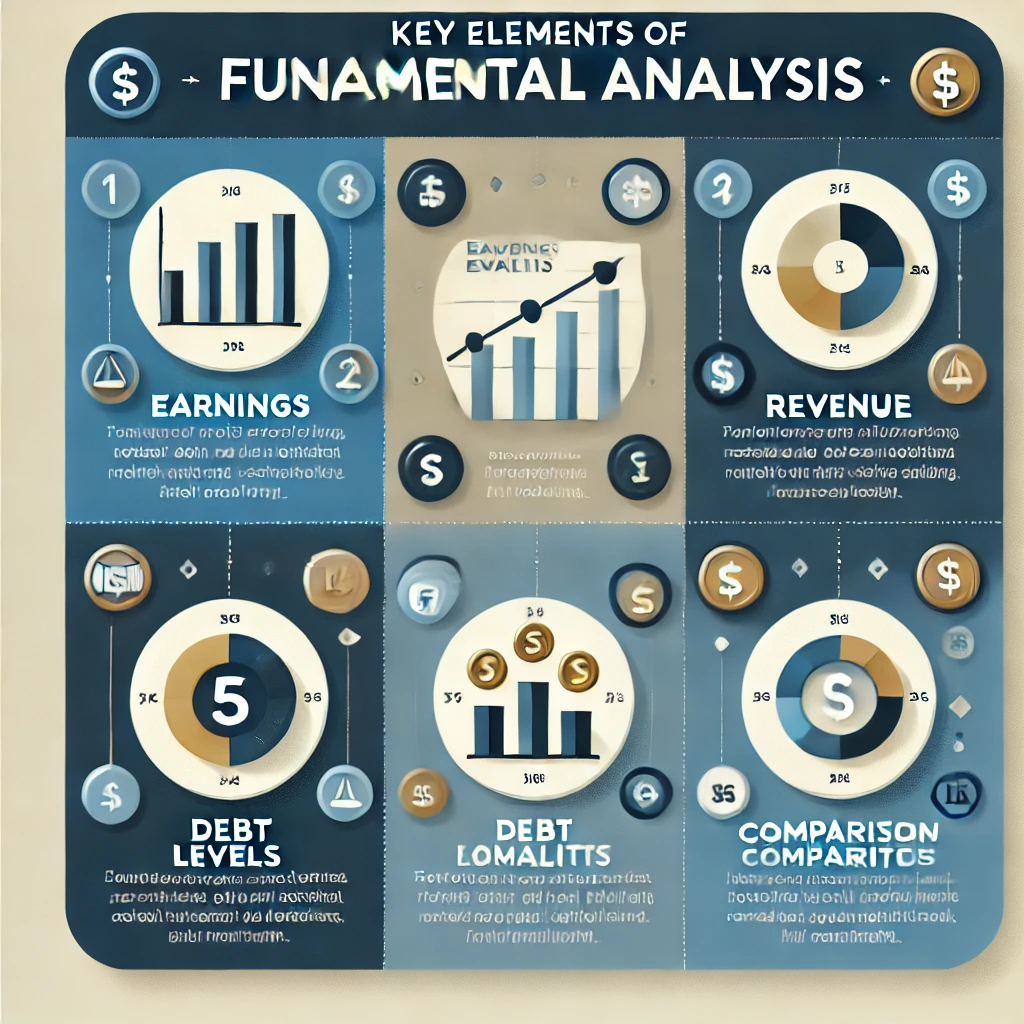Fundamental Analysis Guide
What Is Fundamental Analysis?
An Investor's Guide to Valuing Stocks Based on Business Strength

Fundamental analysis is a technique used by investors and financial analysts to determine the true or “intrinsic” value of a stock or asset. Instead of relying on market price alone, it digs deep into a company's financials, its management, industry conditions, and the overall economy. This approach helps investors make more informed decisions based on long-term growth potential rather than short-term market trends.
Key Elements of Fundamental Analysis
The Metrics That Matter Most

Fundamental analysis evaluates various internal and external factors. Here are the core components:
- Financial Statements: Analyzing balance sheets, income statements, and cash flow statements gives a clear picture of a company's financial health.
- Management Quality: The experience, vision, and integrity of a company’s management team can greatly influence success.
- Economic Indicators: Factors like inflation, GDP, employment rates, and interest rates affect market performance.
- Industry Conditions: Understanding trends, competition, and market demand within an industry helps gauge a company’s potential.
For more, read Understanding Financial Statements.
Quantitative vs. Qualitative Analysis
Combining Data with Intuition

Fundamental analysis is broadly categorized into two types:
How Fundamental Analysis Works
From Balance Sheets to Decisions
Investors perform fundamental analysis by estimating a company’s intrinsic value using various models and then comparing it to the current market price.
This approach often includes Discounted Cash Flow (DCF) models, earnings forecasts, and macroeconomic evaluations.
Popular Ratios Used
Key Numbers That Define Value
Several financial ratios are widely used in fundamental analysis to measure profitability, valuation, efficiency, and solvency:
- P/E Ratio: Price-to-Earnings (P/E) Ratio Compares stock price to earnings per share.
- PEG Ratio: Adjusts the P/E ratio by expected growth rate.
- Debt-to-Equity Ratio: Indicates the company’s financial leverage.
- Return on Equity (ROE): Measures how effectively a company uses shareholder equity to generate profit.
TThese ratios allow comparisons across companies and sectors.
Explore Top 5 Stock Analysis Tools for more.
Why Fundamental Analysis Matters
Making Confident, Informed Investments
Fundamental analysis provides a logical, data-backed framework for investment decisions. It is ideal for:
- Long-Term Investors: To identify companies with real growth potential.
- Value Investors: To find undervalued stocks with strong fundamentals.
- Risk Management: Avoid investing in companies that appear profitable on the surface but have weak internal metrics.
- Make value-based decisions.
It goes beyond speculative strategies and supports stable portfolio building.
Conclusion
Invest with Confidence
Fundamental analysis remains a cornerstone of smart investing. By focusing on a company's core financial strength and industry position, investors can reduce risk and aim for consistent returns. Whether you're a beginner or a seasoned investor, mastering this approach offers a clear advantage in navigating the stock market with confidence.